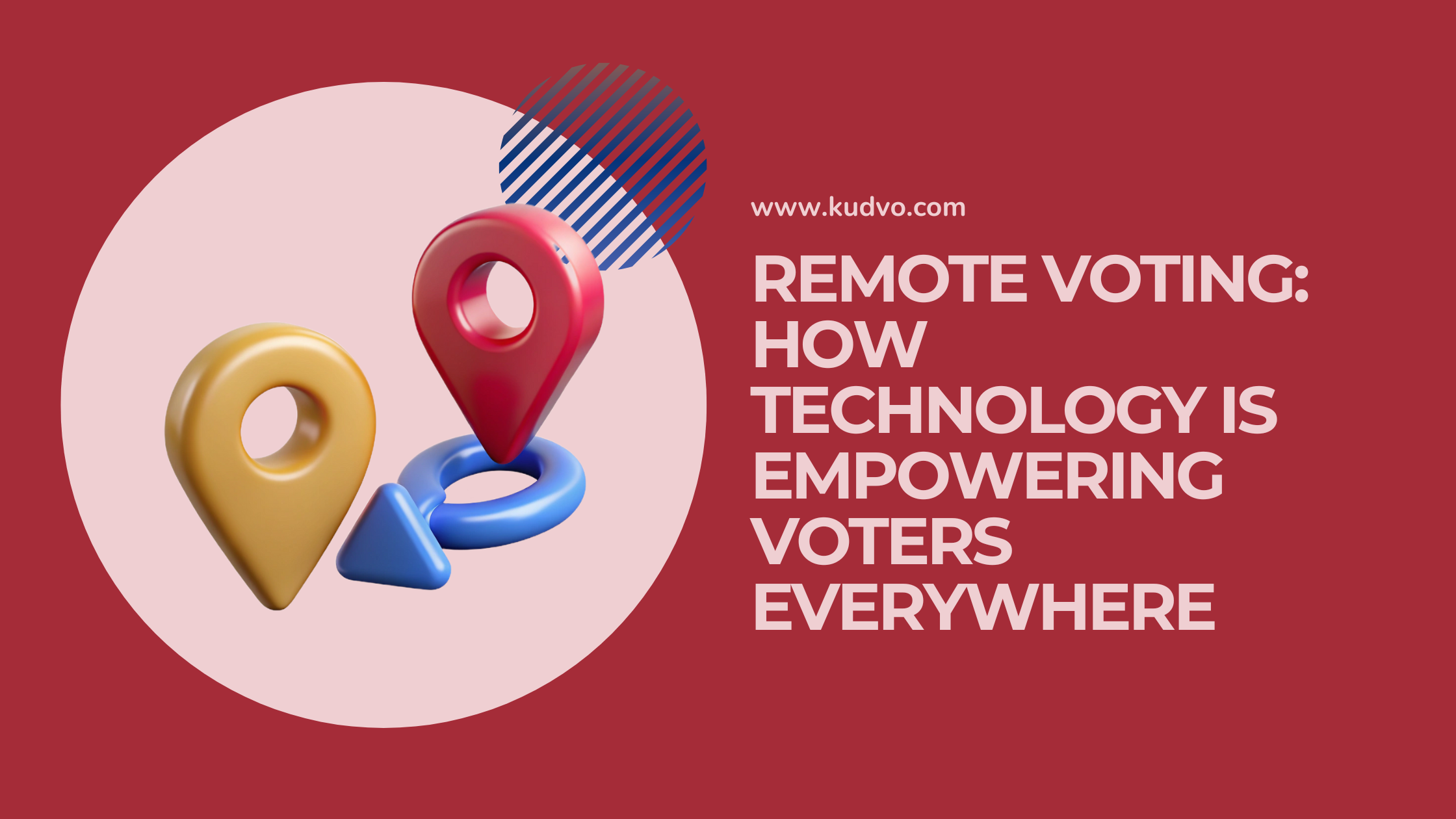Remote Voting: How Technology Is Empowering Voters Everywhere
Introduction
Ever missed voting because you were traveling, ill, or simply too far from a polling station?
You’re not alone. Millions of people around the world face barriers when it comes to participating in elections.
Enter remote voting—a technology-driven solution that allows citizens to vote from wherever they are. Whether it's through postal ballots, online platforms, or mobile apps, remote voting is transforming the democratic process into something more accessible, inclusive, and flexible.
In this blog post, we’ll explore how remote voting works, its benefits, real-world implementations, and the key challenges it still faces.
Brought to you by www.kudvo.com—where digital innovation meets everyday impact.
1. What Is Remote Voting and Why Does It Matter?
Remote voting refers to any voting method that doesn’t require voters to be physically present at a polling place. It includes:
Mail-in ballots
Online voting (i-voting)
Mobile voting apps
Proxy voting (voting via an authorized representative)
Remote voting matters because:
It ensures greater participation in democracy.
It serves overseas citizens, military personnel, and people with disabilities.
It supports safe voting during crises—like COVID-19, which made remote voting essential in many countries.
2. Benefits of Remote Voting: More Voices, Less Friction
Remote voting comes with a long list of advantages. Here are some of the biggest ones:
🏠 Convenience
Voters can cast their ballot from home, on the road, or even abroad.
No more waiting in lines or arranging transportation.
🌍 Inclusivity
Helps marginalized groups participate:
Seniors or people with limited mobility
Expats and citizens living overseas
Rural or remote communities
⏱️ Increased Turnout
More convenience = higher voter engagement.
Case in point: In the 2020 U.S. Presidential Election, a record 46% of voters cast ballots by mail.
💰 Cost Efficiency
Reduces the need for polling stations and staff.
Cuts down logistical and printing costs over time.
3. How Countries Are Implementing Remote Voting
Many countries have already embraced remote voting in different forms, and their experiences provide valuable lessons.
🇺🇸 United States
Offers absentee and mail-in ballots across all states.
2020 saw more than 65 million mail-in ballots due to the pandemic.
🇪🇪 Estonia
A global leader in online voting since 2005.
Over 50% of votes were cast online in its 2023 parliamentary elections.
Uses strong authentication with digital ID cards and blockchain tech.
🇨🇭 Switzerland
Piloted online voting for citizens living abroad.
Focused on transparency and verifiability using open-source systems.
🇦🇺 Australia
Allows remote electronic voting for citizens with disabilities and those in remote areas.
Uses a secure online platform called iVote (though paused in 2022 to upgrade security).
4. Challenges That Come With Remote Voting
While promising, remote voting isn't without its hurdles. Here are the most pressing challenges:
🔐 Security Risks
Cyber threats like hacking, phishing, or vote tampering.
Need for end-to-end encryption and strong user authentication.
🧾 Lack of a Paper Trail
Without a physical record, it’s harder to verify and audit results.
Some systems now offer voter-verified paper audit trails (VVPAT).
🌐 Digital Divide
Not everyone has equal internet access or digital literacy.
This can create inequities in participation.
🤔 Trust and Transparency
Skepticism around vote integrity can lower public confidence.
Governments need to ensure clear communication and oversight.
Conclusion: The Future of Voting Is Remote—and Accessible
Remote voting is reshaping democracy by removing traditional barriers and bringing the ballot box to the people. Whether it’s a soldier stationed overseas, a rural voter without transport, or someone juggling a busy schedule—remote voting empowers them all.
That said, success hinges on trust. Security, accessibility, and transparency must be baked into every remote voting system. With the right technology and thoughtful implementation, remote voting could very well become the standard of future elections.
Want to stay ahead of the digital democracy curve? Visit www.kudvo.com for more insights into how technology is transforming civic life.
